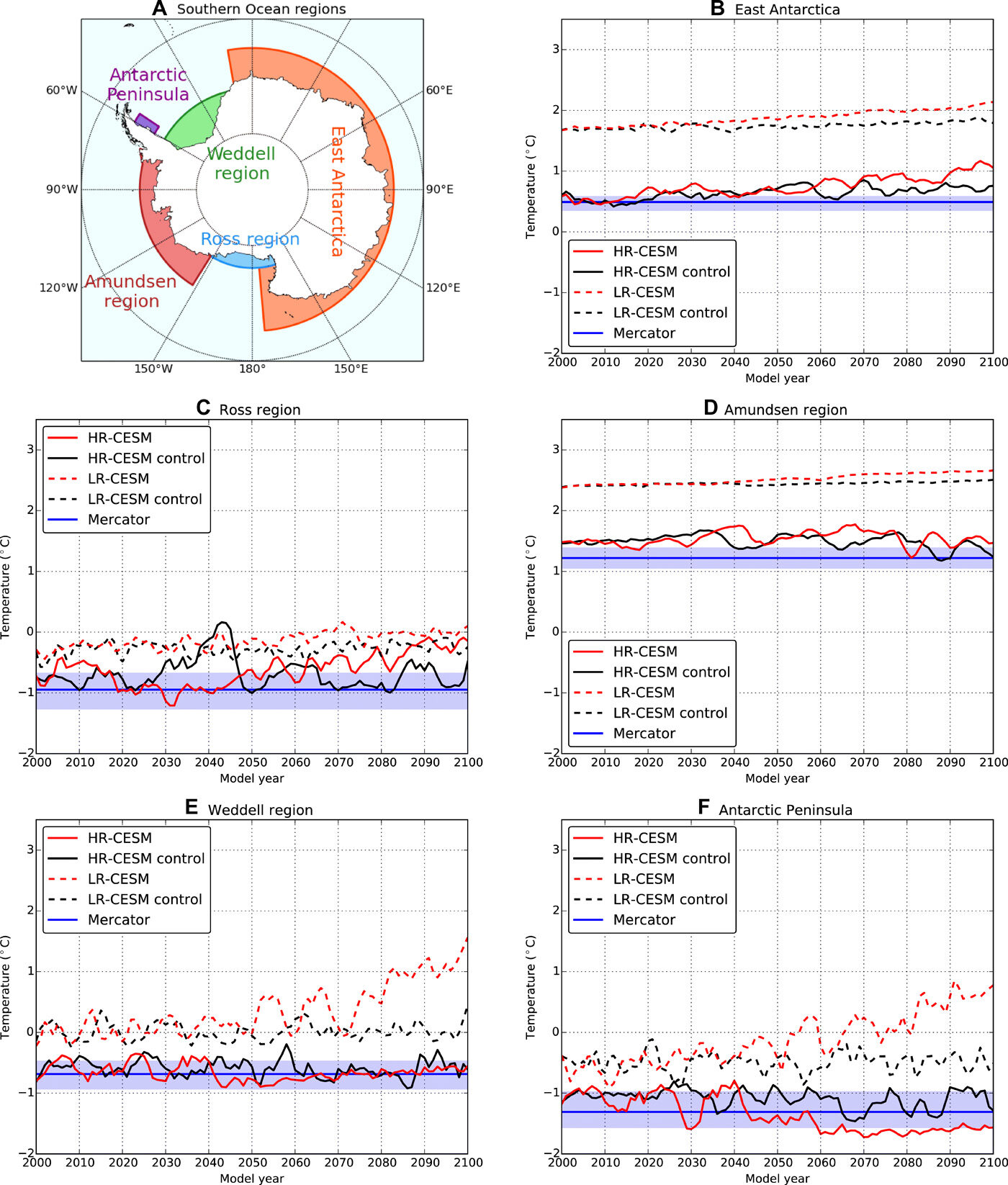
Estimates for future sea-level rise are based on a large ensemble of climate model simulations. The output from these simulations helps to understand future climate change and its effects on the sea level. Climate researchers continually aim to improve these models, for example by using a much higher spatial resolution that takes more details into account. "High-resolution simulations can determine the ocean circulation much more accurately," says Prof. Henk Dijkstra. Together with his Ph.D. candidate René van Westen, he has been studying ocean currents in high-resolution climate model simulations over the past few years.
Ocean eddies
The new high-resolution model takes into account ocean eddy processes. An eddy is a large (10-200 km) swirling and turbulent feature in the ocean circulation, which contributes to the transport of heat and salt. Adding ocean eddies into the simulation leads to a more realistic representation of the ocean temperatures surrounding Antarctica, which is key for determining the mass loss of the Antarctic ice sheet. "The Antarctic ice sheet is surrounded by ice shelves which reduce the flow of land ice into the ocean," Van Westen explains. "Higher ocean temperatures around Antarctica increase the melting of these ice shelves, resulting in an acceleration of land ice into the ocean and consequently leading to more sea-level rise."
Comparison of the new high-resolution model (left) with the previously used low-resolution one (right). Credit: Utrecht University
The current climate model simulations, which do not take ocean eddies into account, project that the ocean temperatures around Antarctica are increasing under climate change. The new high-resolution simulation shows quite different behavior and some regions near Antarctica even cool under climate change. "These regions appear to be more resilient under climate change," says Van Westen. Dijkstra adds: "One obtains a very different temperature response due to ocean-eddy effects."

(A) The five Southern Ocean regions over which the basal melt is determined, similar to those in Levermann et al. (7). (B to F) Time evolution of the regional and depth-averaged oceanic temperature of the five Southern Ocean regions for the CESM simulations. For Mercator, the time mean over 1993–2018 is displayed (solid lines) and the shading indicates the minimum and maximum temperature over this period.
The new high-resolution model projects a smaller mass loss as a result of ice-shelf melt: only one third compared to current climate models. This reduces the projected global sea-level rise by 25% in the upcoming 100 years, Van Westen mentions. "Although sea levels will continue to rise, this is good news for low-lying regions. In our simulation, ocean eddies play a crucial role in sea-level projections, showing that these small-scale ocean features can have a global effect."
It took the team about one year to complete the high-resolution model simulation on the national supercomputer at SURFsara in Amsterdam. Dijkstra: "These high-resolution models require an immense amount of computation, but are valuable as they reveal smaller-scale physical processes which should be taken into account when studying climate change."
More information: R.M. van Westen el al. Ocean eddies strongly affect global mean sea-level projections. Science Advances (2021). DOI: 10.1126/sciadv.abf1674



Comment: They are only confirming what researchers on the margins have been saying for years.